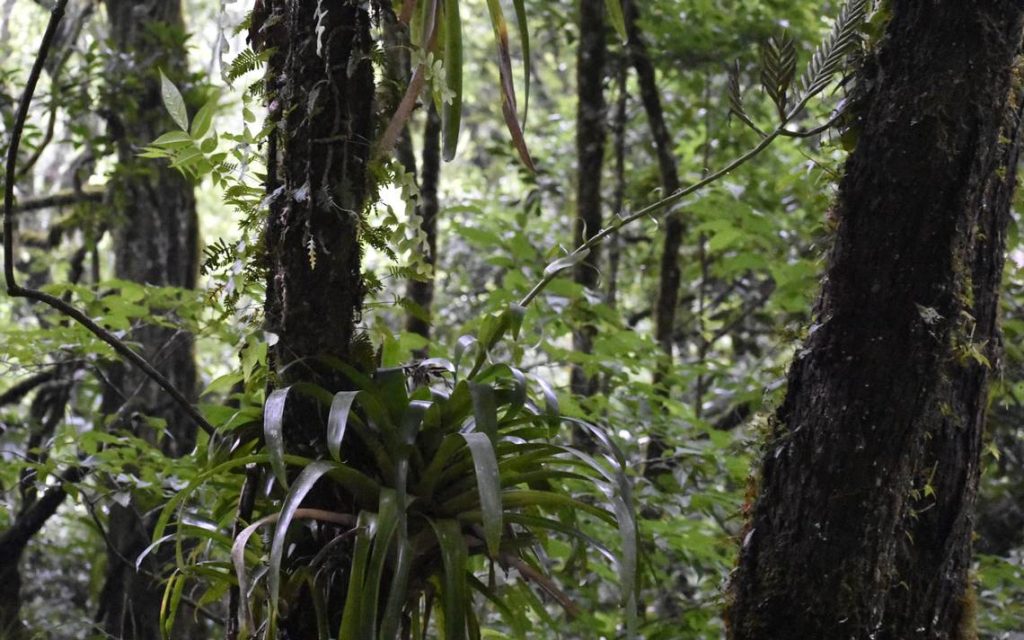Science: Learn about the first inhabitants of Xalapa and how we harmed them, reports UV researcher Cesar Carvajal Hernandez – Diario de Xalapa

In the city, immersed in everyday life, we tend to put aside the fact that we are invaders of a place where the first Xalapeños are in constant danger: it is about plants and animals that arrived long before us and that thanks to them we can exist.
Cesar Carvajal Hernandez, Researcher at the Institute of Biological Research at the University of Veracruzana (UV), He points out that it is these early Xalapeños who provide us with vital ecological services and that, despite the current conditions of pollution and pillage, they give us more than we expect.
Read more: Science .. Are you afraid of some things .. There are explanations ..
As part of an interdisciplinary research project where experts from UV and El Colegio de Veracruz participate, called Socio-ecological function of the neotropical green areas of Xalapa, Carvajal Hernández is responsible for analyzing the role of plants, especially air plants, as indicators that the environment is healthy or degraded.
The research is conducted in specific areas of the city: Osby, the Nature Park, Martinique, Claviguero Park and The Hague, and the goal is to determine the structure of the green spaces and which are used by the animals that live there.
What are air plants?
Carvajal Hernandez explains that uA saturated plant is a plant that lives on other plants, such as ferns, orchids, and bromeliads. Which indicates that we are lucky to see him in Xalapa.
“These plants, which live in very restrictive conditions, because in theory they don’t have the same resources as those that live in the soil, where there is more water and nutrients, they have to manage them with the few resources that come to survive. That’s why when conditions change They disappear,” he explains.
The researcher tells us that saturated plants act as regulators of the microclimate, retain water and act as sources for other organisms.
He adds that if in a green area there is “vegetation that may indicate that the place is climatically fine, then it ensures the right conditions for the arrival of this species”.
It is abundant that in Xalapa we have a medium-sized mountain forest, It is a very diverse ecosystem, ‘but all its richness is linked to very specific environmental conditions; and we have seen that when the environment changes, many of these species of highly sensitive pedestrian plants, too, die.”
“In the middle forest when there is disturbance, the temperature increases by one degree Celsius and the humidity decreases by 30 to 40 percent, and the light enters more directly, and these conditions cause a loss of 60 to 70 percent of the richness of fern species, many of which are plants Botanical and these are the groups that we use as indicators, starting with the premise that if we have a forest in good condition, we will find many of these species as indicators, if they are not found, it means that our green areas are in the process of deterioration,” the researcher in Ultrasound points out. Violet.
environmental services
Carvajal Hernández points out that there are many myths about epiphytic plants, such as that they are flat parasites of trees and harm them, but no, because the trees act as their support, without modifying them, making them sick or stealing from them. Nutrients.
In a single tree, you can have up to 30 types of starchy plants Other plants are related to it and also depend on a large number of insects.
We hope to show that green urban areas are an important refuge for biodiversity, not only for animals, but also for plants. It’s not just about the aerial plants, it’s about the great diversity of trees we have, primary and secondary, and other large trees that are remnants of what was once here,” he explains.
It is a question, the researcher frequently asks, that green areas serve as a reservoir of biodiversity, and these in turn perform very important ecosystem functions, such as feeding animals, capturing carbon, capturing water, and regulating the microclimate.
“Despite all the problems and pressures humans place on green spaces, they continue, with their gentle resilience, to fight to survive and perform the jobs they would do in the forest. This army of biodiversity that we have in cities does what it can with what it has, and that’s what we want His insights into research, and how much he contributes to environmental services, he says.
The doctor indicates it Air plants face predation, because there are people who enter the green space and take them away to sell as ornaments, They are also affected by climate change, as many are very sensitive to changes in temperature and eventually disruption of their environment, usually due to deforestation or changes in land use.
The researcher calls not to be afraid of nature, not to submit to it, to acquire plants and flowers from nurseries or UMAS and not from the street, where they usually come from plunder.
“What one hopes is that people will respect green spaces, but what we see is that there is a fear of them, because they are thought to be a nest of harmful insects or animals, but without thinking about all the services they provide us. We must respect nature and for this we must know it, know What they do for us, for the sake of the entire environment,” he concludes.

“Future teen idol. Hardcore twitter trailblazer. Infuriatingly humble travel evangelist.”




:quality(85)/cloudfront-us-east-1.images.arcpublishing.com/infobae/BNGH73UCKQAZSQPCODUWO2BE5Y.jpg)





